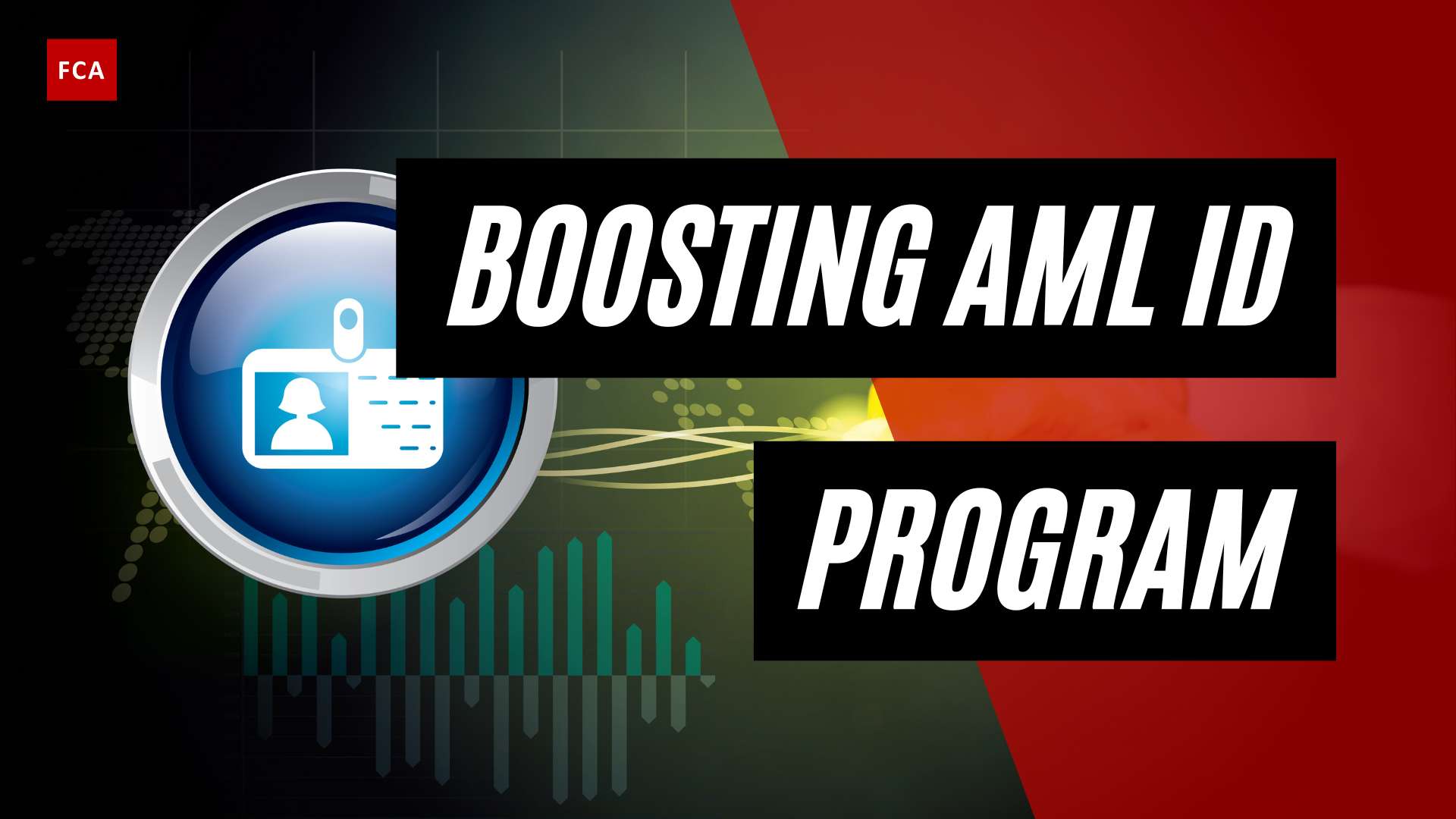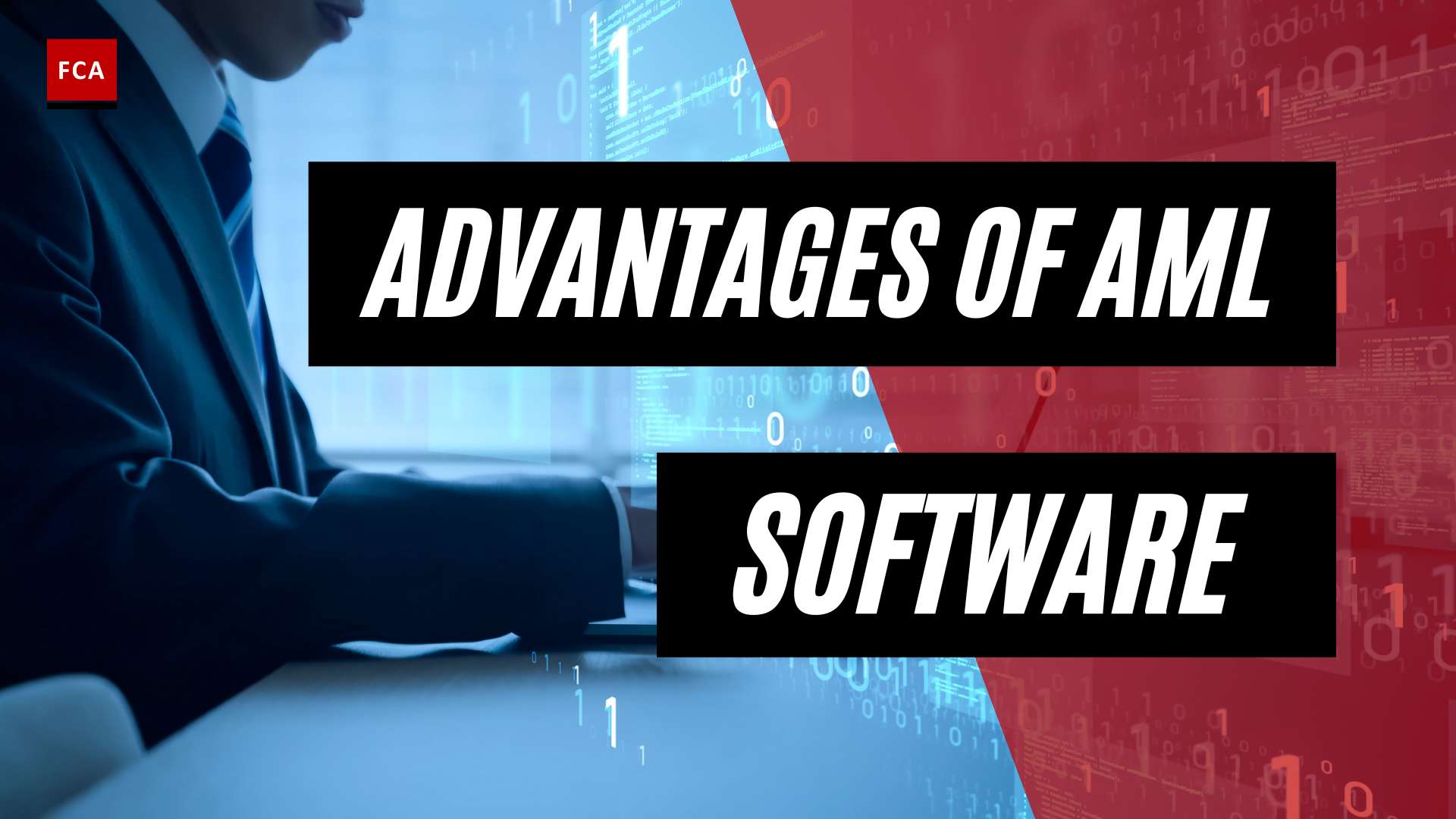Understanding AML Compliance
To effectively combat financial crime and protect the integrity of the global financial system, organizations need to understand the importance of Anti-Money Laundering (AML) compliance and its role in preventing illicit activities. Let’s explore what AML compliance entails and why it is crucial for businesses.
What is AML Compliance?
AML compliance refers to the set of rules, regulations, and procedures that financial institutions and other regulated entities must follow to prevent money laundering, terrorist financing, and other illicit financial activities. Money laundering involves disguising the origins of illegally obtained funds, making them appear legitimate. Terrorist financing, on the other hand, involves providing financial support to individuals or organizations involved in terrorist activities.
AML compliance programs aim to detect and prevent these activities by implementing robust systems and controls, conducting due diligence on customers, monitoring transactions, and reporting suspicious activities to the appropriate authorities. Compliance with AML regulations is mandatory for financial institutions, including banks, credit unions, money services businesses, and securities firms, among others.
Importance of AML Compliance
The importance of AML compliance cannot be overstated, as it serves multiple crucial purposes:
-
Preventing Financial Crime: AML compliance measures help organizations detect and deter money laundering and terrorist financing activities. By implementing thorough customer due diligence processes and transaction monitoring systems, businesses can identify and report suspicious activities, thereby disrupting criminal networks and preventing the flow of illicit funds.
-
Ensuring Regulatory Compliance: Governments and regulatory bodies around the world have established AML laws and regulations to protect the integrity of the financial system. Non-compliance can result in severe penalties, including hefty fines, reputational damage, and legal consequences. By adhering to AML compliance requirements, businesses can demonstrate their commitment to upholding ethical standards and complying with applicable laws.
-
Safeguarding Reputational Integrity: Money laundering and financial crime can have devastating consequences for an organization’s reputation. Being associated with illicit activities can erode customer trust, deter potential business partners, and damage relationships with regulators. AML compliance helps protect the reputation and credibility of businesses by ensuring transparency, accountability, and ethical conduct.
By implementing robust AML compliance programs and utilizing AML compliance solutions, organizations can effectively mitigate the risks associated with financial crime, meet regulatory obligations, and maintain the trust and confidence of stakeholders.
In the next sections, we will delve into the different types of AML software available, international AML standards, the benefits of AML compliance solutions, key challenges in AML compliance, specific AML compliance solutions in the market, and how to implement an effective AML compliance program.
AML Compliance Solutions
To effectively combat financial crime and ensure regulatory compliance, organizations rely on AML (Anti-Money Laundering) compliance solutions. These solutions leverage technology to automate, streamline, and optimize compliance tasks, helping financial institutions adhere to required AML regulations (Unit21). AML software plays a crucial role in verifying customers, flagging suspicious transactions, screening sanctions and PEP (Politically Exposed Person) lists, and mitigating false positives more efficiently than manual processes (Unit21).
Overview of AML Software
AML software encompasses a range of technologies that utilize artificial intelligence and data science to optimize AML operations. These solutions analyze large volumes of data, enabling organizations to effectively detect and prevent financial crimes. Some key features of AML software include transaction monitoring, customer due diligence, watchlist screening, and suspicious activity reporting (KYC Hub).
Types of AML Software
There are various types of AML software available in the market, each serving specific purposes within the compliance process. These software types include:
- Identity verification tools: These tools help organizations verify the identities of customers and ensure compliance with KYC (Know Your Customer) regulations.
- Transaction monitoring tools: These tools analyze transactional data in real-time to identify suspicious activities and patterns.
- Case management tools: These tools aid in the management and tracking of investigations related to suspicious activities.
- Sanctions and PEP screening tools: These tools screen individuals and entities against global sanctions and PEP lists to ensure compliance with regulatory requirements.
- Risk assessment and management tools: These tools assess and manage the risk associated with customers, transactions, and relationships.
- Suspicious activity reporting tools: These tools facilitate the reporting of suspicious activities to relevant authorities.
- Investigation optimization tools: These tools assist in optimizing the investigation process by automating certain tasks and providing advanced analytics capabilities.
- Alert scoring tools: These tools help prioritize alerts generated by transaction monitoring systems, increasing the efficiency of the investigation process (Unit21).
Considerations for Choosing AML Software
Selecting the right AML software is crucial for organizations aiming to enhance their compliance efforts. When choosing AML software, various factors should be considered, including:
- User interface: An intuitive and user-friendly interface facilitates ease of use and reduces the learning curve for compliance professionals.
- Automation capabilities: The software should offer automation features to streamline compliance processes and reduce manual effort.
- Operational efficiency: AML software should enhance operational efficiency by optimizing workflows and reducing false positives.
- Easy setup and integration: The software should be easy to set up and integrate with existing systems, minimizing disruption to business operations.
- Regions covered: Organizations should ensure that the AML software covers the jurisdictions relevant to their operations.
- Vendor support and updates: Adequate vendor support and regular updates are essential to address any issues and stay compliant with changing regulations.
- Customer service: Responsive and reliable customer service ensures prompt assistance and guidance when required (Unit21).
By carefully considering these factors, organizations can choose the AML software that best aligns with their specific compliance needs and requirements. Customization options are also available to tailor the software to the unique risk profiles and operational workflows of different industries and organizations (KYC Hub). Implementing AML compliance solutions can streamline the compliance process, reduce manual effort, and ultimately enable organizations to focus on their core business functions (KYC Hub).
International AML Standards
When it comes to combating money laundering and ensuring effective AML compliance, international standards play a crucial role. Various organizations and jurisdictions have established guidelines and regulations to strengthen the global fight against financial crimes. This section will explore three key international AML standards: the Financial Action Task Force (FATF), the European Union AML Directives, and the United States Bank Secrecy Act (BSA).
Financial Action Task Force (FATF)
The Financial Action Task Force (FATF) is an intergovernmental organization that sets global standards for combating money laundering, terrorist financing, and other related threats. The FATF has developed a series of recommendations known as the FATF recommendations, which are recognized as the international standard for AML and counter-terrorist financing measures.
As per the FATF recommendations, financial institutions are required to maintain robust AML compliance programs, which include customer due diligence, a risk-based approach to monitoring transactions, and record-keeping of customer identification information. These measures help in identifying and mitigating the risks associated with money laundering and terrorist financing (Shufti Pro).
European Union AML Directives
The European Union (EU) has introduced a series of AML directives to strengthen the AML framework across its member states. The 6th Anti-Money Laundering Directive (6AMLD) is one of the most recent directives that came into effect on December 3, 2020. This directive aims to enhance the EU’s efforts in preventing financial crimes.
The 6AMLD broadens the definition of money laundering, introduces stricter penalties, mandates central registers for beneficial ownership, and identifies 22 predicate offenses associated with money laundering. These measures ensure that financial institutions have a comprehensive understanding of their customers and transactions, thereby making it more difficult for criminals to exploit the financial system (Sanction Scanner).
United States Bank Secrecy Act (BSA)
In the United States, the Bank Secrecy Act (BSA) is a key piece of legislation that addresses AML compliance. The BSA requires financial institutions to establish and maintain effective AML programs to prevent money laundering and terrorist financing. It places obligations on financial institutions to report certain transactions and maintain comprehensive records of clients’ identities and transactions.
Non-compliance or intentional neglect of AML requirements under the BSA can lead to severe penalties, including fines and imprisonment. Financial institutions must adhere to the BSA’s requirements to ensure compliance and protect the integrity of the financial system in the United States (Sanction Scanner).
By adhering to international AML standards such as the FATF recommendations, the EU AML directives, and the BSA, countries and financial institutions can work together to create a strong global defense against money laundering and other financial crimes. These standards provide a framework for effective AML compliance, helping to safeguard the integrity of the financial system and protect businesses and individuals from the risks associated with illicit financial activities.
Benefits of AML Compliance Solutions
Implementing robust AML compliance solutions offers numerous benefits to businesses in their fight against financial crime. By adopting these solutions, organizations can significantly reduce the risks associated with money laundering, ensure regulatory compliance, and safeguard their reputational integrity.
Reducing Financial Crime Risks
AML compliance solutions play a vital role in reducing the risk of financial crime for businesses. By leveraging advanced technologies such as transaction monitoring, customer due diligence, watchlist screening, and suspicious activity reporting, these solutions help detect and prevent illicit activities, such as money laundering and terrorist financing. The utilization of sophisticated algorithms and machine learning enables organizations to analyze large volumes of data effectively, identifying suspicious patterns and behaviors that might go unnoticed through manual methods.
Ensuring Regulatory Compliance
The adoption of AML compliance solutions is crucial for businesses to ensure transparency, credibility, and trust among their customers and stakeholders. In an era of increasing regulatory scrutiny, organizations must comply with stringent anti-money laundering regulations to prevent non-compliance penalties, reputational damage, and financial losses. AML software solutions streamline the compliance process, automate regulatory adherence, and provide a comprehensive audit trail to demonstrate compliance efforts (Shufti Pro).
Safeguarding Reputational Integrity
Maintaining a strong reputation is essential for businesses in the financial sector. AML compliance solutions help safeguard reputational integrity by ensuring that organizations are actively taking measures to prevent financial crime. By effectively implementing AML software solutions, businesses can demonstrate their commitment to compliance and gain the trust of customers, partners, and regulators. This, in turn, strengthens their position in the market and enhances their credibility (Shufti Pro).
The global AML software market is witnessing significant growth, with an expected value of $2.61 billion by 2026, indicating the increasing adoption of AML solutions by organizations worldwide. These solutions not only reduce the risk of financial crime but also improve operational efficiency, save costs, and enable businesses to focus on their core functions (KYC Hub).
By embracing AML compliance solutions, businesses can effectively combat money laundering, terrorist financing, and other financial crimes. These solutions provide the necessary tools and technologies to detect suspicious activities, mitigate risks, ensure regulatory compliance, and protect the reputation of organizations in an ever-evolving landscape of financial crime.
Key Challenges in AML Compliance
While implementing an effective AML compliance program is crucial, there are key challenges that organizations face in their efforts to combat money laundering and financial crime. These challenges include customer due diligence (CDD), transaction monitoring, and regulatory changes.
Customer Due Diligence (CDD)
Customer due diligence (CDD) is a critical component of AML compliance. It involves verifying the identity of customers, assessing their risk profiles, and monitoring their transactions to detect any suspicious activity. A recent survey found that 70% of financial crime and compliance leaders view CDD as the most significant challenge in AML compliance (NorthRow).
One of the main challenges in CDD is the vast amount of customer data that organizations need to collect and analyze. This includes gathering information such as personal identification, source of funds, and beneficial ownership. Ensuring the accuracy and completeness of this data can be a complex process, particularly for organizations with a large customer base.
To address this challenge, organizations can leverage AML compliance software that automates the CDD process, streamlines data collection, and performs risk assessments. Implementing robust AML policy and procedures and providing comprehensive AML compliance training to employees can also enhance the effectiveness of CDD efforts.
Transaction Monitoring
Transaction monitoring is another significant challenge in AML compliance. It involves analyzing customer transactions to identify potentially suspicious activities, such as large cash deposits, frequent transfers, or unusual transaction patterns. According to the same survey, 50% of financial crime and compliance leaders consider transaction monitoring to be a major challenge (NorthRow).
One of the primary difficulties in transaction monitoring is the sheer volume of transactions that organizations need to analyze. Criminals continually discover new methods of money laundering, employing complex transactions like layering and integration to evade detection by financial institutions (Sanction Scanner). This requires sophisticated analytics tools and algorithms to identify patterns and anomalies that may indicate illicit activity.
To overcome this challenge, organizations can leverage advanced AML compliance software that automates transaction monitoring and employs machine learning algorithms to detect suspicious patterns. Additionally, implementing regular AML compliance audits and continuously updating transaction monitoring systems to adapt to emerging money laundering techniques can strengthen an organization’s ability to detect and prevent financial crime.
Regulatory Changes
The ever-evolving regulatory landscape poses another significant challenge in AML compliance. Compliance officers often note that one of the biggest issues with AML compliance is the vast number of emerging regulations, making it challenging to keep up-to-date and remain compliant. Financial institutions must stay informed about new laws, regulations, and guidance issued by regulatory bodies such as the Financial Action Task Force (FATF), European Union AML Directives, and the United States Bank Secrecy Act (BSA).
Organizations need to dedicate resources to monitor regulatory changes and ensure that their AML compliance programs align with the latest requirements. This may involve updating AML compliance policies and procedures, implementing new AML compliance controls, and enhancing AML compliance training for employees.
By staying proactive and adopting a robust compliance framework, organizations can navigate the challenges of customer due diligence, transaction monitoring, and regulatory changes in their AML compliance efforts. Implementing appropriate AML compliance solutions and keeping abreast of industry trends and best practices can help organizations mitigate the risks associated with money laundering and financial crime.
AML Compliance Solutions in the Market
With the increasing need for effective AML compliance solutions, several software providers have emerged in the market. These solutions are designed to automate, streamline, and optimize compliance tasks to help financial institutions meet regulatory requirements and combat financial crimes. Let’s explore some of the notable AML software providers:
Unit21 AML Software
Unit21 offers comprehensive AML software solutions designed to assist organizations in verifying customers, flagging suspicious transactions, screening sanctions and PEP lists, and mitigating false positives. Leveraging artificial intelligence and data science, their software optimizes AML operations and enhances compliance processes. By automating key tasks, Unit21’s AML software enables financial institutions to improve efficiency and reduce the risk of financial crime. For more information, visit Unit21 AML Software.
Shufti Pro AML Solutions
Shufti Pro provides advanced AML solutions to help businesses fight against financial crimes. Their AML compliance software offers features such as identity verification, transaction monitoring, case management, and risk assessment. By leveraging AI and machine learning algorithms, Shufti Pro enables organizations to verify customer identities, detect suspicious activities, and ensure compliance with AML regulations. The software assists in mitigating risks associated with money laundering and other financial crimes. To learn more about Shufti Pro’s AML solutions, visit Shufti Pro AML Solutions.
FINRA Compliance Tools
FINRA (Financial Industry Regulatory Authority) provides a range of compliance tools to assist member firms in meeting AML requirements. These tools include the FINRA Gateway, which allows compliance professionals to access filings, run reports, and submit support tickets related to AML compliance. Additionally, FINRA offers platforms like FinPro, the DR Portal, and FINRA Data, which support various compliance tasks and may encompass AML-related responsibilities. To explore the compliance tools offered by FINRA, visit FINRA Compliance Tools.
NorthRow AML Compliance Solutions
NorthRow specializes in delivering AML compliance solutions that enable businesses to effectively manage regulatory risk. Their software provides features such as identity verification, KYC (Know Your Customer) checks, and ongoing monitoring of customer profiles. By harnessing advanced technology, NorthRow helps organizations streamline customer due diligence processes and stay compliant with AML regulations. For more information on NorthRow’s AML compliance solutions, visit their website.
Sanction Scanner AML Software
Sanction Scanner offers AML software solutions designed to assist financial institutions in adhering to AML laws and regulations. Their software provides a range of features, including risk assessment, customer due diligence, transaction monitoring, record-keeping, sanctions screening, and regulatory updates. By streamlining AML compliance programs, Sanction Scanner helps organizations effectively combat financial crime and meet regulatory requirements. To explore Sanction Scanner’s AML software, visit their website.
Consortix AML System
Consortix offers an advanced AML system that helps financial institutions effectively manage AML compliance requirements. Their software provides features such as customer due diligence, transaction monitoring, risk assessment, and case management. By leveraging innovative technology, Consortix enables organizations to detect and prevent money laundering activities, ensuring adherence to AML regulations. For more information on Consortix’s AML system, visit their website.
These are just a few examples of the AML compliance solutions available in the market. When selecting the right AML software for your organization, consider factors such as the specific features and functionalities required, the reputation and reliability of the software provider, and the ability to customize the software to meet your organization’s unique needs. To learn more about considerations for choosing AML software, visit our section on Considerations for Choosing AML Software.
Implementing an AML Compliance Program
To effectively combat money laundering and ensure regulatory compliance, it is crucial for organizations to develop a robust AML compliance program. This section will explore the key components of such a program, including developing an AML compliance program, conducting regular risk assessments, implementing effective Know Your Customer (KYC) procedures, and monitoring and reporting suspicious activities.
Developing an AML Compliance Program
A comprehensive AML compliance program should be tailored to the specific risks and needs of the organization. It should outline the policies, procedures, and controls necessary to prevent money laundering and other illegal financial activities. This program serves as a roadmap for the organization to ensure compliance with relevant AML laws and regulations.
The program should include:
- AML policy and procedures that clearly define the organization’s commitment to combating money laundering and provide guidance on how to comply with AML regulations.
- A designated AML compliance officer or team responsible for overseeing and implementing the program.
- Training programs to educate employees on their AML obligations, including recognizing and reporting suspicious activities.
- Internal audits and reviews to assess the effectiveness of the program, identify potential gaps, and implement necessary improvements (AML Compliance Audits).
Conducting Regular Risk Assessments
Regular risk assessments are essential for identifying specific risks related to money laundering and other illegal financial activities. By evaluating the organization’s exposure to these risks, organizations can develop and implement effective risk mitigation strategies. Risk assessments should take into account factors such as the nature of the organization’s business, customer profile, geographical and jurisdictional risks, and the products and services offered.
By conducting regular risk assessments, organizations can:
- Identify high-risk areas and customers that require enhanced due diligence.
- Implement appropriate policies and procedures to address identified risks.
- Stay up to date with evolving money laundering trends and regulatory changes.
- Continuously evaluate and enhance the effectiveness of their AML compliance program.
Implementing Effective KYC Procedures
Verifying the identity of customers and assessing their risk profile through KYC procedures is crucial for preventing money laundering and other illegal financial activities. Effective KYC procedures help organizations ensure that they are not facilitating criminal activity.
Key elements of effective KYC procedures include:
- Collecting and verifying customer identification information, such as government-issued identification documents.
- Conducting customer due diligence (CDD) to assess the risk associated with each customer and determine the appropriate level of monitoring and enhanced due diligence required.
- Periodically updating customer information to ensure its accuracy and relevance.
- Monitoring customer transactions to detect any unusual or suspicious activities.
Organizations can leverage technology solutions, such as AML compliance software, to streamline and automate their KYC procedures and enhance their efficiency and effectiveness (AML Compliance Software).
Monitoring and Reporting Suspicious Activities
Ongoing monitoring of customer transactions is a critical component of an AML compliance program. By analyzing transactional data and customer behavior, organizations can detect potential money laundering or other criminal activities. Any suspicious activities should be promptly reported to the appropriate authorities in accordance with regulatory requirements.
To monitor and report suspicious activities effectively, organizations should:
- Implement transaction monitoring systems that can flag potentially suspicious transactions based on predefined scenarios and thresholds.
- Establish clear procedures for reporting suspicious activities internally and to the appropriate regulatory bodies.
- Maintain comprehensive records of reported suspicious activities and the actions taken in response.
By implementing an AML compliance program that encompasses these elements, organizations can establish strong defenses against financial crime and ensure their continued compliance with AML regulations.
Selecting the Right AML Software
When it comes to choosing the most suitable AML software for your organization, several considerations come into play. It is important to evaluate your specific needs and budget while also taking into account the reputation and experience of the software provider. Let’s explore the key factors to consider when selecting AML software.
Considerations for Choosing AML Software
Selecting the right AML software is not a one-size-fits-all decision. It requires a thorough evaluation of your organization’s compliance requirements and risk profile. Here are some important considerations to keep in mind:
-
Industry Experience: It is crucial to choose an AML software provider with experience in your industry. Different sectors have unique compliance challenges, and a provider familiar with your industry’s specific requirements can offer tailored solutions.
-
Reputation: The experience and reputation of the AML software provider play a significant role in the selection process. Look for providers with a proven track record of delivering reliable and effective solutions. Seek recommendations from trusted sources to ensure you choose a reputable provider.
-
Scalability and Customization: AML software solutions should be scalable and customizable to suit your organization’s specific needs. This flexibility allows businesses to adapt the software to their unique risk profiles and compliance requirements. Consider whether the software can be tailored to align with your organization’s processes and workflows.
-
Integration Capabilities: Evaluate the integration capabilities of the AML software with your existing systems and processes. Seamless integration can enhance the efficiency of your compliance operations and enable smooth data transfer between systems.
-
User-Friendly Interface: A user-friendly interface is essential for efficient utilization of the AML software. Look for software that offers intuitive navigation, clear reporting, and user-friendly dashboards. This will facilitate ease of use and enhance the overall user experience.
Reputable AML Software Providers
There are several reputable AML software providers in the market. Research and compare different providers to find the one that best aligns with your organization’s needs. Consider factors such as industry experience, customer reviews, and the provider’s track record in delivering reliable compliance solutions.
Customizing AML Software for Specific Needs
AML software solutions can be customized to suit the specific needs of different industries and organizations. This flexibility allows businesses to adapt the software to their unique risk profiles and compliance requirements, enhancing the effectiveness of their AML programs. Work closely with the software provider to ensure that the solution can be customized to align with your organization’s specific needs.
By carefully considering these factors, you can choose the right AML software that effectively addresses your compliance requirements and risk profile. Implementing robust AML software can streamline your compliance processes, reduce manual effort, and enhance operational efficiency, enabling your organization to focus on core business functions.








